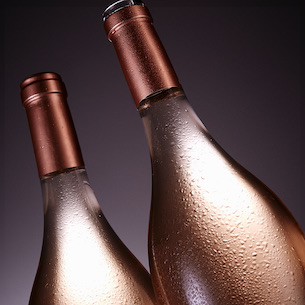.png.transform/rendition-xs/image_image%20(1).png)
The World of Spanish Rosé: a selection by Master of Wine Almudena Alberca
There's no prettier color in the world of wine than rosé. The range is very broad, from pale Provençal-style rosés to the deep and intense rosés that are more classic and representative of Spain. Spanish Master of Wine Almudena Alberca selects her favourites.
by Almudena Alberca - @almudenaalbercamw
Rosé has always been a complicated type of wine that has not been taken seriously until relatively recently. It was always an ephemeral category, as the wines have lasted only a short time at their peak. Rosés have also been popular wines that have been consumed all year round, while reds were assumed to age better and have greater value.
The rosé world has turned a corner in recent years, and the category has grown. It has strengthened its position, now representing approximately 10% of the world's wine production. This boom has mainly been led by Provençal-style rosés, those with a pale pink color, soft scents of talc, and above all the fluidity and smoothness in the mouth that characterizes them.
This trend has rejuvenated and repositioned rosés. Spain is one of the world's main rosé producers, and in recent years these wines have continued to delight our senses with a wide range of styles, from the most classic to the most modern, including rosés which prove that time has not passed them by.

Some rosé classics
One of Spain's great rosé producers is undoubtedly Peñascal. A pioneer based in Castile-León since 1973, it has been delighting us for almost 50 years with rosés that are easy to drink and very affordable for all kinds of consumers. It's a fresh wine with a vivid color, great aromatic intensity, and a vibrant energy from its fine semi-sparkling tannins—indubitably a leader that has crossed borders.
Cigales is one of the most classic rosé production areas. The center of Castile-León is fortunate to have a classic, Sinforiano, very close at hand. It's a wine made in Spain with a strong color and aroma—an absolutely delicious rosé. It comes from a beautiful, serious family project founded in 1966 that currently boasts 80 hectares of its own vineyards, 37 of which are goblet-trained, and 40% of the vineyard is more than 60 years old. The varieties used include Tempranillo, Garnacha, Albillo, and Verdejo.

There are varieties with a special predisposition for the production of rosé, such as Prieto Picudo from Tierra de León DO. A great example of the potential of this variety and the area is Gurdos, which is made using a traditional technique called madreo by Bodegas Gordonzello.
Among the more modern and pale-colored Provençal-style wines is a fantastic example made with Bodegas Izadi's know-how: Larrosa. Produced in Rioja Alavesa with old Garnacha grapes planted at high altitude, the result is a delicate, elegant wine with an exquisite texture. A wine with great personality.
The Muga family also produces these stellar, delicate rosés, hitting the bull’s-eye with Flor de Muga.

Talking about ‘clarete’
Classic and serious. One clarete wine to be aged and enjoyed is masterfully made by Jorge Monzón and is called Pícaro del Aguila. The current vintage is 2020 and it's a delight. It combines red and white grapes almost equally, which represents the traditional style of making clarete in Ribera del Duero. Unstemmed grapes from vineyards that are over 80 years old with varieties such as Grey Tempranillo, Albillo, and Bruñal, an indigenous variety from Arribes del Duero. The wine is aged in used barrels for more than 16 months. It has a completely different color, between red and orange, and unique aromas that attract the attention of curious wine lovers.
The winery where time appears to stand still and which has demonstrated that time can and must go on for rosé wine is Viña Tondonia. Tondonia rosé is an exceptional wine. It's a rosé that has found its place among elite fine wines, the most desired rosé by wine lovers. You rarely have the chance to enjoy it, but if you do, time will surely stand still. The few bottles that can currently be found are from the 2012 vintage, which are truly wonderful and position rosés at the top.
This has been a brief look at the broad variety and exciting world of rosés in Spain, where the country's great potential is visible. It may very well be the most creative and surprising category in recent times. Olé!

